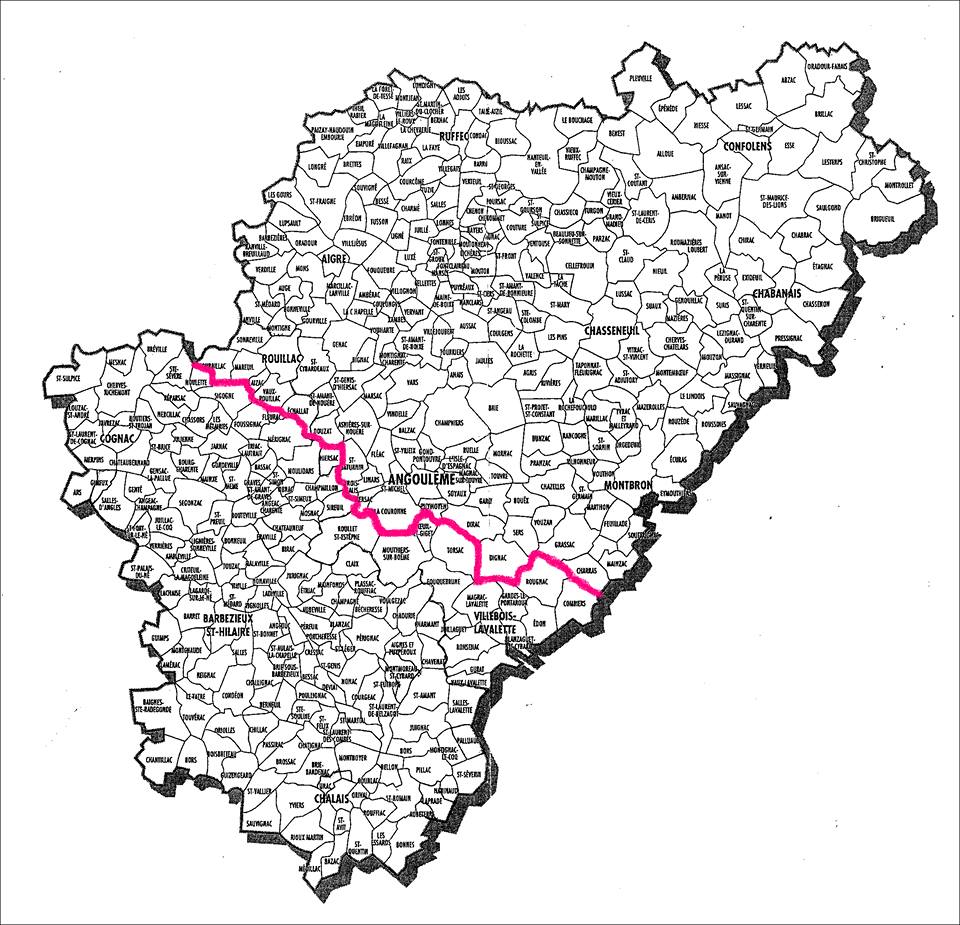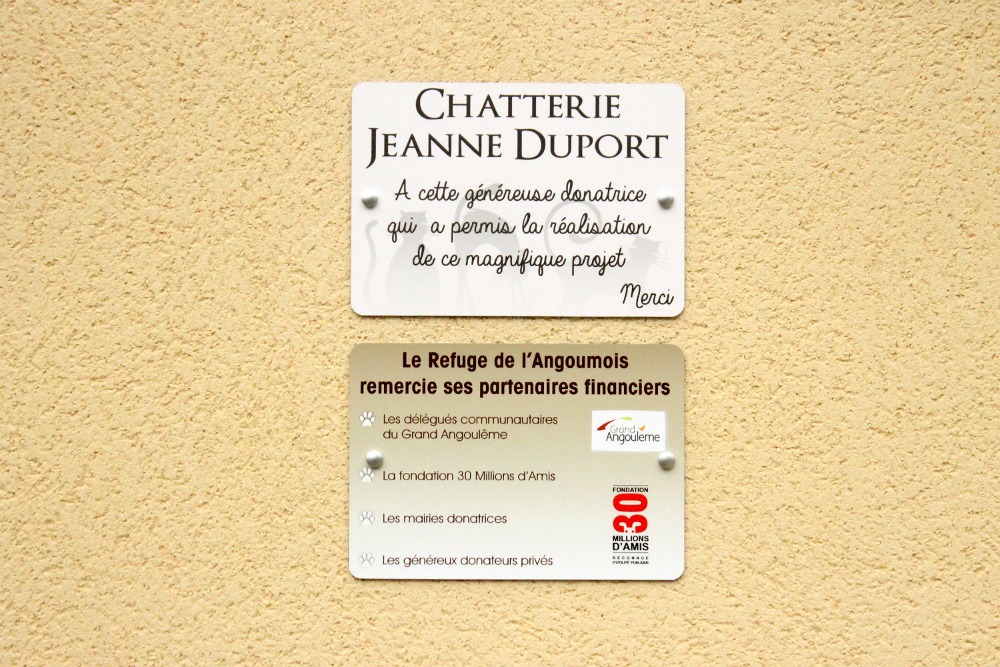And more to the point, how did I end up here?
I’m Emma. I’m an English teacher, examiner and writer based in South-West France. I also offer full-time behavioural support to adoptants of dogs from our shelter and also from other local shelters. Sometimes my work involves dogs who owners want to keep instead of surrendering but they have run out of options.
I’ve always been an animal lover and my heart belongs to rescues. I’ve never had a dog that wasn’t.
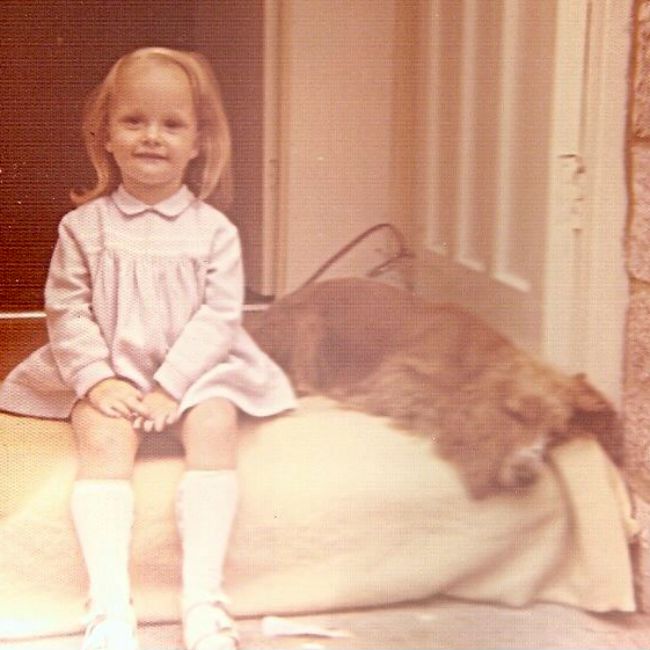
This is me with our family cocker spaniel. I’ve always loved cockers. If I could go with one breed, cockers would be it. American, English, working… I don’t care. That said, volunteering is a bit like experimenting in a library with a load of new book types. I’ve become a massive fan of wire-haired fox terriers (because they’re small and think they’re rottweilers, not unlike me) and I love big muttley types. Rotties are also fabulous, and I’m a beagle fan too. If it’s scruffy, I’ll love it. If it’s needy and vulnerable, I’ll love it. If it’s a bit shouty, I’ll love it. That goes for people too.
Since working in rescue in France, I’ve come to see the extent of the problem with ‘security’ dogs like Malis and GSD, many of whom are subjected to the most horrendous training regimes. Whilst the problem with hunt dogs will persist until hunting with packs of dogs is no longer legal, at least they are kept in packs and have company. For malis and GSD, they are often kept alone and isolated in tiny crates for much of the time. You can read about it here (in French) The plight of the malinois has touched me more than any other aspect of my work.
My dogs
Currently I have two dogs. That’s my smallest canine family since 2014. I have also fostered for the refuge a number of times. I have a handsome-as-heck groenendael cross and a young baby maligator. I’ve dialled back the fostering, but I’ve had over a hundred dogs stay here, even if only for a night or two. Some make it through the week before they’re rehomed. One great big lump was here over a year, but it doesn’t always go like that. I often have a bathroom full of kittens during kitty season too.
Tilly was with me the longest. She was a pedigree American cocker and she was the apple of my eye. She reminded me all about accidental peeing, about dogs that root through the bins, about dogs who don’t like being touched, and about pushing chairs under so she couldn’t check out the table the moment I stand up. She came to me aged five when her family returned to the UK without her, and she lived with me 9 years. She liked to lie with her legs out like a frog and she was the only dog who slept on my bed the whole night. Tilly was a shouty princess and didn’t like dog-dog kisses, or puppies who don’t have an off switch. She didn’t care if they were 5 kg or 50 kg. She sat nearest to the kitchen just in case the fridge spontaneously blew up and food needed protecting in her stomach.
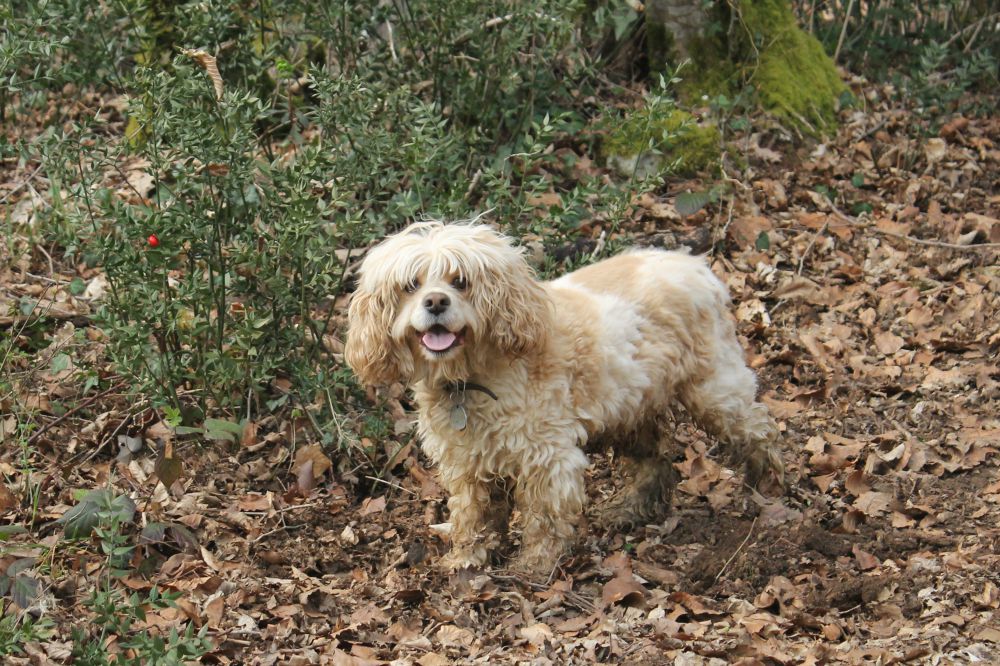
She liked to get dirty and though she was small, she once chased a stag. She knew no fear. She’d also have done anything for a biscuit. Her heel was perfect if I had rawhide about my person.
When Tilly arrived with me, she didn’t know how to play. She played a little as she aged and she loved squeaky toys. She also learned the joy of chasing things, the fun of finding pheasants in bushes, the pleasure of sitting on a sofa by my side rather than always being in her basket, and the happiness of walks. She died in March 2019 following years of ear problems and tummy troubles.
I loved my scruffy Tilly Popper with all of my heart.
After Tilly came my puppy, Heston. He’d been left in a box with his siblings as a day-old pup and was subsequently hand-raised. He’s been with me since he was seven weeks old. I’m responsible for all his great behaviour and all of his shouty, barky teenage ways. He’s seven now and he’s currently having a rest following working on his gundog skill. He blasted through heelwork to music and then tracking and scentwork. He’s a dab hand at finding lost dogs in the forest and he found fourteen lost dogs last year. Heston is a dog’s dog. He loves to play with other dogs and he’s always patient with puppies. Older dogs need a bit of a gentle introduction but he soon remembers his manners even if he likes to set out his stall first. Heston is a groenendael X and he is beautiful. He is so smart and so energetic. He also has epilepsy and we’re navigating a calmer, quieter life.

A hunter once offered me 500€ for Heston. He’s that good at tracking things. Butterflies, swallows, crows, jays, herons, partridge, pheasant, grouse, rabbit, hare, roe deer, wild boar, deer… Heston will chase it all. To be fair, he’s become much more exclusive as a grown-up and hare are his favourite. When he finds his target, he usually wags his tail and barks at it if it doesn’t respond. He’s the only dog I know that didn’t understand why the fox he’d just found didn’t want to play with him. It was for that reason I stopped doing heelwork and agility with him and started scentwork. He was just going through the motions. Now we’re doing a lot of gundog stuff to help him master his chase urges when distinguishing scents. No good getting distracted if you’re in hare territory. He’s the only gundog shepherd I know.
After Heston, there was Amigo… the dog I hand-picked as bomb-proof and non-aggressive with other dogs… the dog that got in a scrap with Heston the moment he arrived. Amigo was a people’s dog rather than a dog’s dog. He’d have been very happy to be the only dog and he suffered others. Amigo was an introverted soul among all my happy extroverts. Where they are happy to have new stuff presented to them, Amigo would have rather stayed by my side. Happily, he settled down (though it took four months of hard work and patient integration) and then Amigo was the one dog who ALWAYS looks at me with those eyes that said, ‘please let it be me and you and nobody else’.
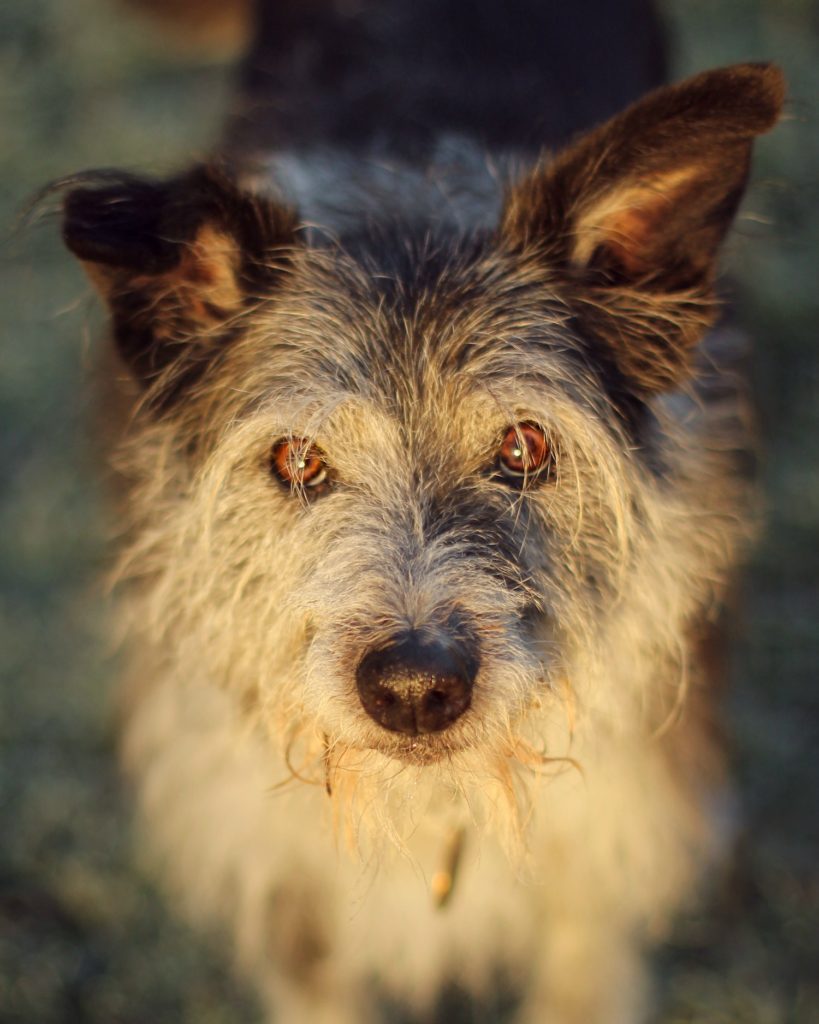
Meego (as he was better known) was my most obedient dog and he was my absolute treasure. He came to me aged (maybe) seven from the refuge and spent a happy four years here. Meego was my dream dog. He was a super hunter as well and he loved chasing rabbit. He once brought me a boar piglet that he’d killed. That was nice of him. Where Heston wags and barks at things, Meeg had the killer inside. Best guess is that he was a griffon x border collie. To be honest, he was as muttley as it’s possible to be. I only ever saw one dog like him. He also had shot pellets in his shoulder from his former life, whatever that might have been. He came to the refuge in February 2014 and came to live with me two months later. Sadly, it’s easy to know how he was taught such good manners; a fly swatter made him hide beneath the table. Amigo had a stroke back in January 2017, and another in August – we navigated the joys of canine cognitive dysfunction and enjoyed our last fourteen months together. In September 2017, he was diagnosed with pulmonary fibrosis. He had vestibular attacks from time to time too. Sadly, he died in March 2018 as his pulmonary fibrosis worsened.
Tobby was my first wobbly malinois. He passed away in November 2016 and he has left the most massive hole in my heart – so much so that I pine for Malinois and it hurts every time I see one of his discarded toys. He got to the ripe age of fifteen, having been here twenty-one glorious months. I took him because I thought he had maybe a couple of weeks left, and my mercy mission turned into a full-on adoption. He got slower and slower as arthritis gave way to cauda equida syndrome and to neurological problems as he aged. Tobby had the worst arthritis and nerve damage I ever saw a dog to have and still be walking. He walked like that old vampire who was all stiff and weird. Tobby didn’t care. He had a wonderful time here for his retirement. He was just a darling. Though he couldn’t sit and give a paw easily, he still tried. He also stared at me intently and liked to keep me in his eyeline in his basket at night. He just looked at me in that way that makes me wonder if he’s just taking me in. Tobby taught me all about predatory drift and separation anxiety and how malis can be flock managers as well as police dogs and security guys.
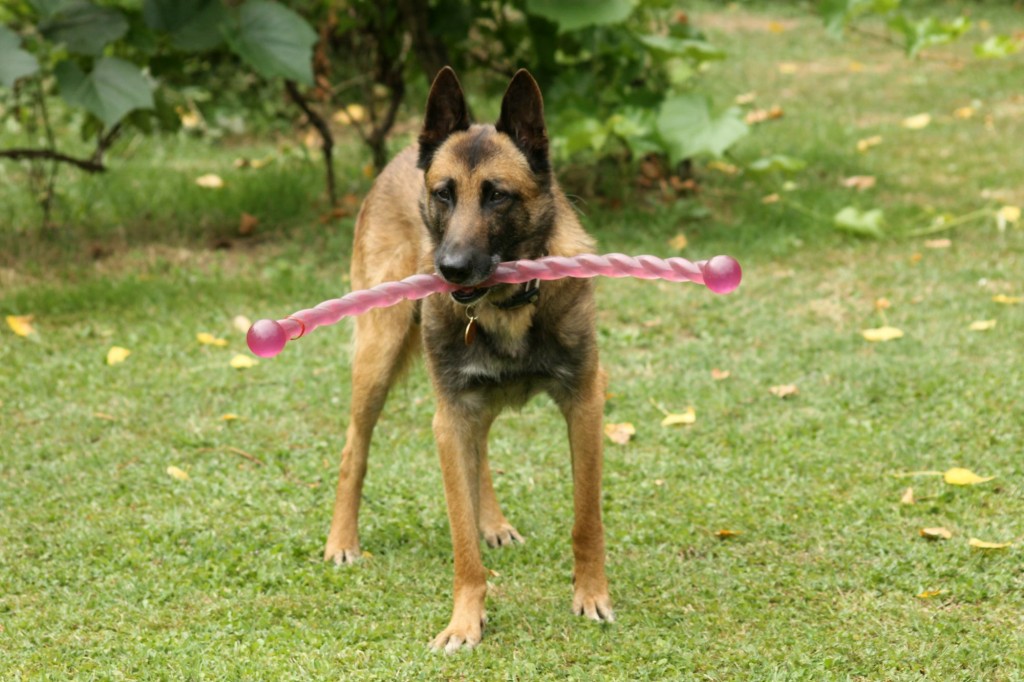
Tobby mostly had a toy in his mouth. He didn’t want you to play with him, he just wanted to carry it around. Tobby loved kittens and he loved other dogs. I miss him most with the entirety of my heart. My next dog will be a malinois, I know it for sure.
Tobby took the place of the dog who is always missing from my soul and the dog who was my dog number four. That dog was Ralf. I started with two dogs and then went to three. Three was my limit until Ralf strayed from the refuge (it happens!) and made his way 10km where I found him on his way to my house (at least, that’s where I think he was going). Ralf was a huge labrador/shepherd cross of twelve years old. He’d been a guard dog all his life. He was Golden Oldie of the Month – Mr November, no less – for Dogs Today Magazine. In dog years, he was 108. Ralf dug holes all over my garden, stole sugar from the cupboard, rooted through the bins, took things off the table, hogged the sofa, went crazy when he saw badgers and once carried the dead boar pig over five kilometres. He’s the only dog I ever had to tell off for trying to bring a dead thing in the car.
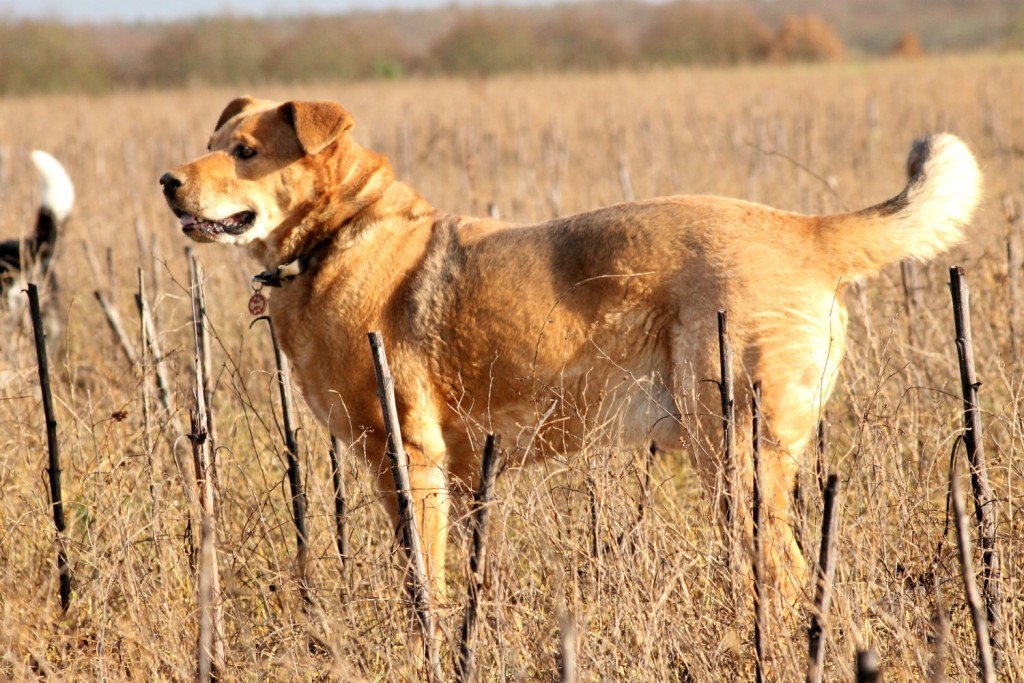
I miss Ralf enormously. All 45kg of him. His massive paws left huge prints there and I can safely say there will never be another Ralf. He had a burst spleen aged 13 and the vet found his liver and lungs were also riddled with tumours. I’d say he had a good innings, but he had 12 years of living at a sawmill and 7 months of chasing badgers and lying on sofas. Ralf taught me that you should always have room in your home for a dog who needs you and he taught me that badgers give as good as they get, even old wounded ones.
I also had a semi-permanent lodger who is both marvellous and an enormous pest: Mr Effel aka The Feff. He found his permanent home in November 2017 after 18 months in foster.

The Feff belonged to an old lady who went into a nursing home. She didn’t want her dogs to go to the shelter, so our secretary convinced me to take them. I did because one was a blind labrador. I thought The Feff would find a home and the blind labrador would live out his days here. Well, the blind labrador found a home and The Feff hung around like a bad smell. Luckily, I was equipped with the ways of the shepherd having been taught well by Tobby. Predatory drift x 10 for this guy who likes to chase lawnmowers, bikes and joggers. He was fab with other dogs, although he and Heston had man wars about man stuff that involves a lot of staring and posturing.

Flika came as a surprise addition. She turned up aged 8 at the shelter and spent 9 months there in 2013. She was returned once with separation anxiety, escape attempts and destruction. Then she was adopted again. Sadly, she was then sold on as a “guard dog” where she spent four years in a warehouse before making a break for it (or being abandoned). She arrived back at the pound with arthritis, cauda equida like Tobby, a missing eye and cystitis. The first time I saw her, she was having a nosebleed on my shoe. I never saw a dog having a nosebleed and I can’t stand oldies in the shelter. I had a space, so I took her home. We navigated separation anxiety, severe storm phobia and health issues, but she was the sweetest girl. She walked like an excited cat on a lead and liked to chase cars, cows and sheep. She was a social butterfly and loved anything living. Once, she stood watching the cows for ten minutes and she was itching for them to come and say hi. Those cows were so ignorant.
Finally, my most recent hot mess: Lidy. Lidy had three years at the shelter and not without reason. We’re still navigating the complexities of life but we do have a rock solid relationship on which we’re building a better relationship with the world. Lidy is the worst of malinois gone wrong: territorial, predatory, aggressive with strangers, aggressive with other dogs, mouthy, addicted to dopamine and adrenaline.

Luckily, I love her very much. I forgave her for grabbing my pony tail and not letting go. I also forgave her for putting holes in my clothes. She arrived with me in November 2019.
I work mostly with vet referrals these days although I used to do much more with shelters. Now most of my work is post-bite. My work with rehomed dogs include separation anxiety, repetitive behaviours, isolation distress, resource guarding, or lack of socialisation and work their way up to much more extreme cases of aggression. Many are common-or-garden fix-over-the-phone type of problems. Some of those dogs are pre-surrender. Just like the shouty kids at school, it was always the misunderstood hard nuts that got to me, and it still is.
I also did a lot of the photos of dogs for the shelter site.
That involved cold sessions in kennels with dogs who don’t have a history with me and whose history I don’t have, and sticking a big black eye in their face. Click and Treat photography, for sure.
As for the techno stuff, I’m a Canon fan but a convert to Sony Mirrorless. I have some bog-standard entry-level equipment, a top-of-the-line 50mm and 55mm lens, Photoshop and a night school photography qualification that was more about getting down and dirty with chemicals in darkrooms than it was about using cloning to edit out dog slobber and accidental excitements. I photographed dogs at the refuge. Well, that’s one of the things I did. It was my way of helping to find them homes, since I already had dogs of my own and I didn’t have room for another hundred or so. I switched last year to a Sony Mirrorless and haven’t looked back.
I was also a member of the board of trustees at the refuge, where we decided important stuff like staffing, budgets and how to deal with large donations or massive, unexpected budget cuts as well as the not-so-important stuff like where we can get a cheap supply of pens. I’m particularly interested in dog rehabilitation after abusive or traumatic homes, and how we can make shelters the best stepping-stone we can.
My worst dog moment was when a dog called Nichman decided that play might involve a bit of light humping with me on the floor in the mud. My best dog moment was getting two ‘untouchable’ bitey, fearful spaniels eating out of my hands in less than two minutes and accepting cuddles within an hour. My best dog photography moment was winning a year’s supply of Dogs’ Today magazine. My worst dog photography moments are too numerous to mention but are getting fewer and further between.
I took up the books again to support humans and dogs cope n the world, and I completed my thesis on assessment of aggression in the shelter. I also do a lot of professional development. I graduated with distinction on an advanced canine behaviour course that took me about two years to complete. My dissertation at that level was on people’s experiences of adopting shelter dogs. It used fancy words like phenomenological and hermeneutics, but at its heart, it was about understanding the drive to adopt.
I graduated in a double degree of English and Psychology in 1994. That followed by 13 years of in-class teaching and consultancy. My post-grad in Change Leadership would have been easier if it were acceptable to clicker-train humans, though I confess I use biscuit and cake in the same way with humans. Luckily, the psychology bit of my first degree is as useful now as the learning bit of my second post-grad and the camera stuff of my night school studies. It all came together in the end. I still teach and I am involved at a senior level with GCSE English assessment in the UK. I like seeing potential achieved, and that is true of all my students, be they human, canine or feline. It’s all about the learning for me, be you a Hairy Quadruped or Naked Ape.
I’m also a tutor at The DoGenius where I very happily write and teach courses. Life’s goals met, right there. Learning, writing, speaking and teaching about dogs.
I’m a member of the Pet Professional Guild and I’m very proud to be certified as a shelter dog behaviour consultant by the International Association of Animal Behavior Consultants. 
The pages on this website are written in response to common issues raised by our adoptants and my posts are rooted in the work of pet ethologists, behaviour consultants and positive dog trainers as well as my own case studies and practice.
As you’d perhaps expect, I’ve written a book to help dog trainers. It’s available on Amazon as a digital download and also a paperback. Client-Centred Dog Training is aimed at helping dog trainers get the most out of their human clients.
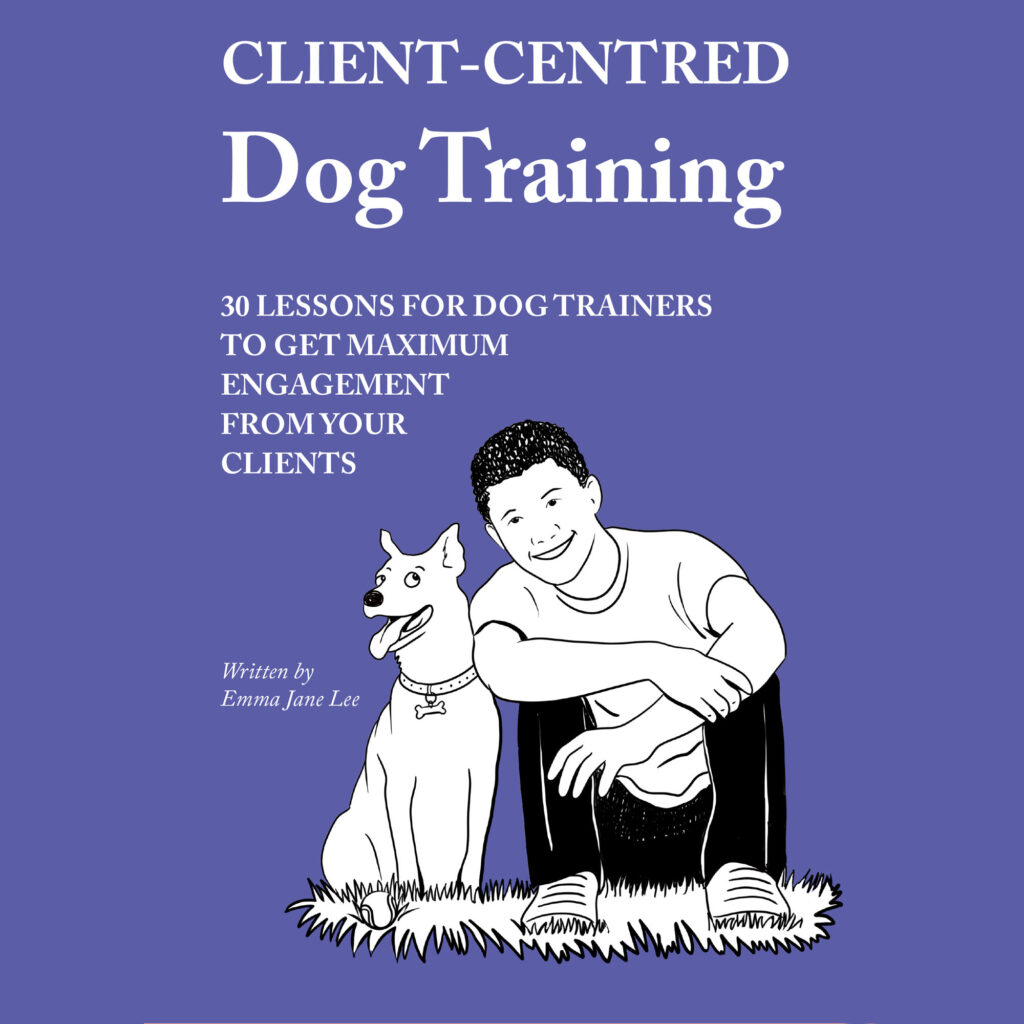
Thanks very much for reading!
Courses followed:
The International School of Canine Psychology and Behaviour: diploma (completed July 2017) & advanced diploma (graduated with distinction, January 2020)
Sirius Dog Training: 4-day puppy training course
University of Edinburgh: Animal Welfare
Behavior Works: Living and Learning with Animals 8 week course













